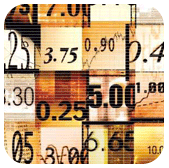Services
Analytics
Data Mining
 Data Mining is a collection of techniques drawn from
computer science that has a wide range of applications.
Some of these techniques come from the field of automated
pattern detection and recognition. They were developed
when computers were being programmed to find specific
patterns in large collections of data. One such application
was programming a computer to count the number of bacterial
colonies in the photograph of a culture dish. Other
techniques come from the field of machine learning which
tries to mimic how the human brain learns and discovers
relationships.
Data Mining is a collection of techniques drawn from
computer science that has a wide range of applications.
Some of these techniques come from the field of automated
pattern detection and recognition. They were developed
when computers were being programmed to find specific
patterns in large collections of data. One such application
was programming a computer to count the number of bacterial
colonies in the photograph of a culture dish. Other
techniques come from the field of machine learning which
tries to mimic how the human brain learns and discovers
relationships.
A classic example of a result of using Data Mining
in the grocery industry was the discovery of the beer
and diapers relationship. Several months of data was
captured for each person that checked out of a grocery
store. When this was combined with demographic data
such as age and gender of the shopper, it turned out
that there was a significant correlation between the
purchase of diapers and beer. It seems that men in their
twenties and thirties, when they are picking up a pack
or two of diapers in the evening, have a propensity
for also buying beer. Putting a display of beer close
to the diapers resulted in an increase in beer sales.
In the insurance industry Data Mining can be used
to find these unexpected correlations. Such correlations
can then go on to be the foundation of a very profitable
cross-sell campaign. Data Mining can also be used to
find combinations of factors which, when all are present
on a policy, result in extremely high loss ratios or
claim frequencies.
Although Data Mining incorporates many statistical
concepts and techniques, it is in some sense at the
opposite end of the spectrum from modeling. Modeling
looks at the big picture and asks what happens "on
average." Data Mining, on the other hand, looks
at the little "nuggets" of information.

|